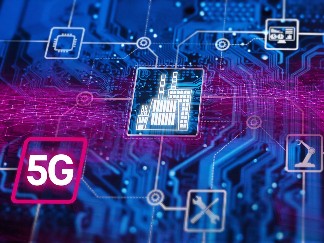
Indeed, one of the hallmark features of 5G networks is their ability to provide ultra-low latency, often touted to be as low as 1 millisecond (ms). This drastic reduction in latency compared to previous generations (like 4G LTE,
which typically has latency in the range of 30-50 ms) opens up various possibilities across multiple applications and industries. Here’s a more detailed look at what ultra-low latency in 5G entails and its implications:







### What is Ultra-Low Latency?
Latency refers to the time it takes for data to travel from its source to its destination and back again. In the context of networking, lower latency means that interactions and data exchanges occur almost instantaneously, which is critical for real-time applications.
### Implications of Ultra-Low Latency:
1. **Real-Time Communication:**
– Applications such as video conferencing, online gaming, and voice calls can operate with minimal delay, enhancing user experiences and enabling new forms of interaction.
2. **Autonomous Vehicles:**
– Low latency is crucial for communication between vehicles (Vehicle-to-Everything, or V2X) and between vehicles and infrastructure. Instantaneous data transmission helps in making split-second decisions to prevent accidents and optimize traffic flow.
3. **Augmented Reality (AR) and Virtual Reality (VR):**
– For AR and VR applications to feel immersive and engaging, latency must be extremely low. Users expect a seamless experience without lag that disrupts the visual and interactive aspects of these technologies.
4. **Telemedicine:**
– In remote healthcare, where doctors may perform consultations or even surgeries remotely, low latency is essential for transmitting video and data in real-time to ensure proper diagnosis and action.
5. **Industrial Automation:**
– In smart factories, machines and robots can communicate with each other almost instantaneously, leading to improved coordination, efficiency in manufacturing processes, and reduced downtime.
6. **Enhanced Gaming Experiences:**
– Cloud gaming and multiplayer online games benefit from low latency, offering smoother gameplay and responses to player actions, which is vital for competitive gaming.
7. **Smart Cities:**
– Real-time data processing from sensors distributed throughout urban areas allows for instantaneous responses to changing conditions, such as adjusting traffic lights based on current traffic flow or managing utilities more efficiently.
### Factors Contributing to Ultra-Low Latency in 5G:
1. **Advanced RAN Technologies:**
– Technologies like massive MIMO (Multiple Input Multiple Output) and beamforming improve the efficiency and precision of signal transmission between devices and the base station.
2. **Edge Computing:**
– Bringing computation and data storage closer to the end-user via Multi-Access Edge Computing (MEC) reduces the distance data must travel, eliminating unnecessary delays.
3. **Network Slicing:**
– 5G enables the creation of virtualized, dedicated network slices for specific applications, optimally designed for the required latency and speed, providing tailored services for different use cases.
4. **Improved Backhaul Infrastructure:**
– Enhanced backhaul networks reduce lag in data transfer between cellular towers and core networks, supporting quick data processing and delivery.
### Conclusion:
Ultra-low latency is one of the transformative features of 5G networks, enabling rapid communication and interaction across various applications and industries. As 5G technology continues to evolve and integrate with other innovations, such as edge computing and IoT, it is set to unlock new capabilities and experiences, fundamentally changing how we interact with technology and the world around us.


Leave a Reply